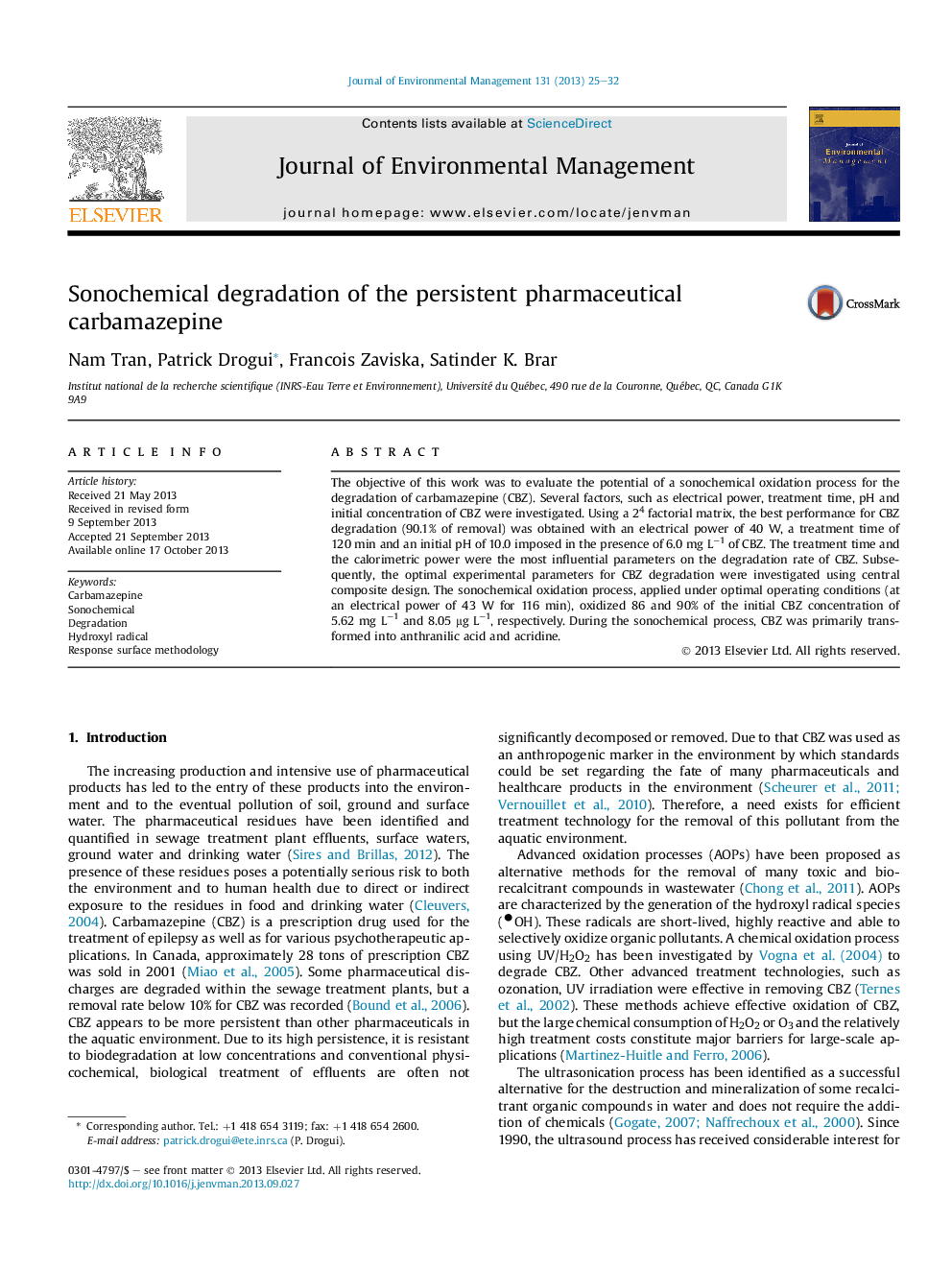| Article ID | Journal | Published Year | Pages | File Type |
|---|---|---|---|---|
| 1055931 | Journal of Environmental Management | 2013 | 8 Pages |
•The treatment time and calorimetric power greatly affect the oxidation rate of CBZ.•Their contribution for CBZ removal is 61.0% and 24.5%, respectively.•A concentration of hydroxyl radical up to 0.048 mM was produced.•More than 90% of CBZ can be removed using the ultrasonication process.
The objective of this work was to evaluate the potential of a sonochemical oxidation process for the degradation of carbamazepine (CBZ). Several factors, such as electrical power, treatment time, pH and initial concentration of CBZ were investigated. Using a 24 factorial matrix, the best performance for CBZ degradation (90.1% of removal) was obtained with an electrical power of 40 W, a treatment time of 120 min and an initial pH of 10.0 imposed in the presence of 6.0 mg L−1 of CBZ. The treatment time and the calorimetric power were the most influential parameters on the degradation rate of CBZ. Subsequently, the optimal experimental parameters for CBZ degradation were investigated using central composite design. The sonochemical oxidation process, applied under optimal operating conditions (at an electrical power of 43 W for 116 min), oxidized 86 and 90% of the initial CBZ concentration of 5.62 mg L−1 and 8.05 μg L−1, respectively. During the sonochemical process, CBZ was primarily transformed into anthranilic acid and acridine.
